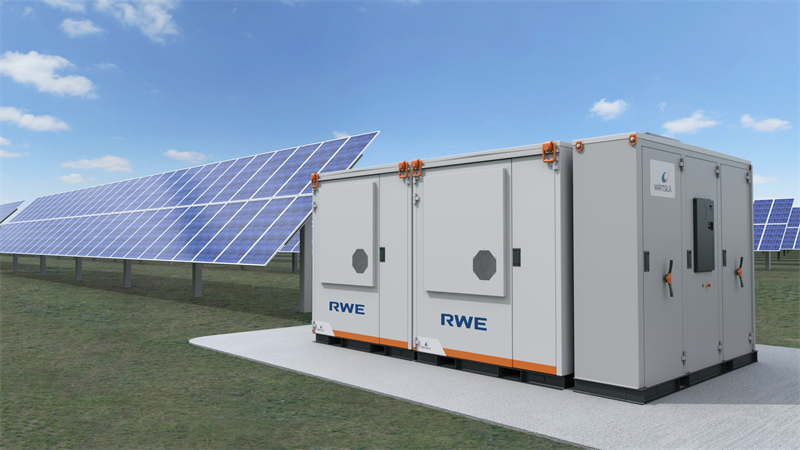From pv magazine USA
At least 226 co-located hybrid front-of-the-meter power plants greater than 1 MW in size were operating in the United States at the end of 2020, according to data tracked by the Energy Department’s Lawrence Berkeley National Laboratory. The total installed capacity topped 30 GW.
Based on Form EIA-860 data, the most common configuration is PV + storage (73 projects totaling 992 MW of solar and 250 MW storage), followed by several fossil-based hybrid categories.
Co-located or hybrid power plants–namely, ones that integrate energy storage on-site with power generation sources, or that co-locate two or more different types of generation–have been part of the U.S. energy mix for years. The dominant trend today is to combine solar PV plants with batteries.
Interconnection queue data from across the country that is tracked by LBNL show a strong commercial interest in hybrid power plants. At the close of 2020, there were more than 460 GW of solar plants in the interconnection queues. Of that, 159 GW, or 35%, was classified as hybrid, typically a solar-plus-battery configuration. For the 209 GW of wind in interconnection queues, roughly 6% of projects were proposed as hybrids, with most of those paired with battery storage.

Solar installations generally spur higher battery attachment rates, as the projects in interconnection had median storage to generation capacity ratio of 60% for solar, and 35% for wind. Solar also had the longest median-duration storage attached, at about 2 hours.
Almost 93% of all hybrid projects in the interconnection queue were solar + battery, representing 88% of the total hybrid capacity. Proposed solar plus battery capacity accounted for more than seven times the combined generator capacity of all other proposed hybrid configurations.
California’s grid CAISO saw the highest rate of solar projects with batteries included, with 89%. That was followed by the West non-ISO territories at 67%, and then the Southwest Power Pool (SPP) and Electric Reliability Corporation of Texas (ERCOT) regions at 22% and 21%, respectively.
In general, the west has shown a greater interest in such projects, as eastern grids including NYISO, ISO-NE, and PJM had hybrid project rates of 5%, 12%, and 19%, respectively.
 CAISO data suggest co-location models are more popular than a true hybrid approach. Co-location entails distinct modeling and dispatch instructions for individual resources behind shared interconnection. Hybrid models use a single bidding approach for multiple resourced behind shared interconnection, meaning there is no separate renewable resource forecast and dispatch. Most of the CAISO capacity planned through 2024 falls under this category, shown in the figure to the left.
CAISO data suggest co-location models are more popular than a true hybrid approach. Co-location entails distinct modeling and dispatch instructions for individual resources behind shared interconnection. Hybrid models use a single bidding approach for multiple resourced behind shared interconnection, meaning there is no separate renewable resource forecast and dispatch. Most of the CAISO capacity planned through 2024 falls under this category, shown in the figure to the left.
Offtake agreements
Berkeley Labs also tracked PV+battery plants with offtake agreements to get a better view of the near-term hybrid pipeline. A sample of 134 projects showed a trend toward longer duration storage and higher battery-to-PV capacity ratios than in currently existing hybrid plants.
Overall weighted-average battery duration of these new offtaker-secured projects was 3.4 hours, with a battery-to PV-capacity ratio of 50%. These numbers were higher than for existing projects, which had an average duration of 2.6 hours and a 25% storage-capacity ratio. Most of the upcoming battery capacity of these projects were in California, Nevada, Texas, and Hawaii.
Based on a review of power purchase agreements, Berkeley Labs found that the cost of adding storage increases linearly with the battery-to-PV capacity ratio, and that overall PPA prices have declined over time, even with the increase of battery-to-PV capacity ratio. This trend held everywhere but in Hawaii, where PV projects often have a 100% storage capacity ratio, and storage-coupled projects come at a premium.
This content is protected by copyright and may not be reused. If you want to cooperate with us and would like to reuse some of our content, please contact: editors@pv-magazine.com.




By submitting this form you agree to pv magazine using your data for the purposes of publishing your comment.
Your personal data will only be disclosed or otherwise transmitted to third parties for the purposes of spam filtering or if this is necessary for technical maintenance of the website. Any other transfer to third parties will not take place unless this is justified on the basis of applicable data protection regulations or if pv magazine is legally obliged to do so.
You may revoke this consent at any time with effect for the future, in which case your personal data will be deleted immediately. Otherwise, your data will be deleted if pv magazine has processed your request or the purpose of data storage is fulfilled.
Further information on data privacy can be found in our Data Protection Policy.